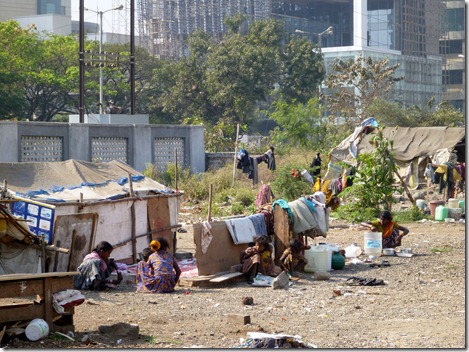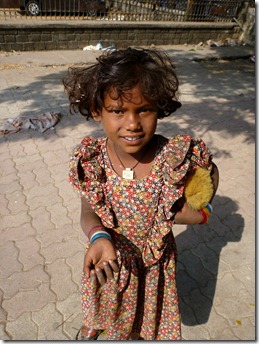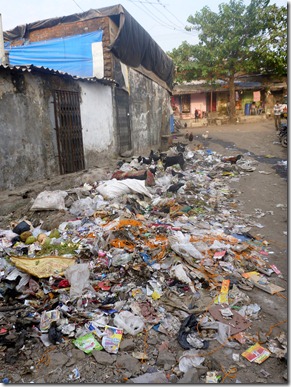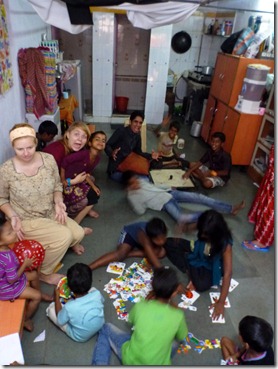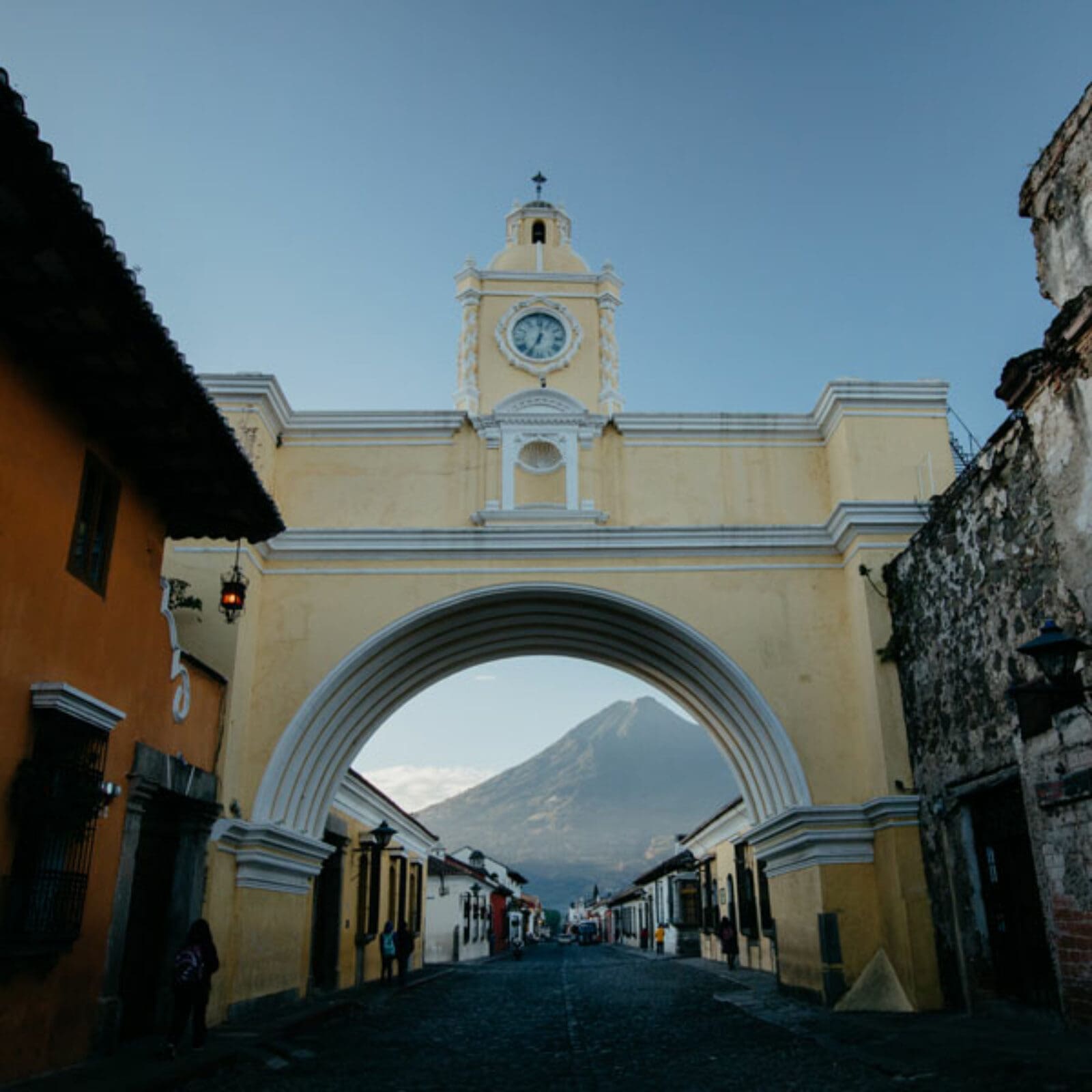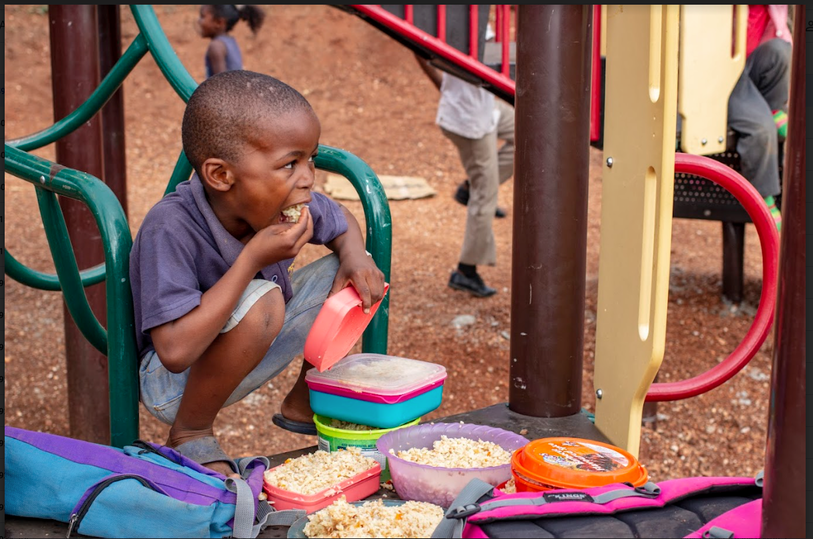Statistics can be numbing. At a certain point, our feeble minds have a hard time grasping the enormity of large things – like when I realized how big one hundred was only after counting out one hundred cheerios on my hundreds chart in kindergarten, or when visiting the Grand Canyon I only understood how massive it was after hiking down for five hours. Somehow my eight-year-old mind thought that we could definitely make it to the river by lunch.
What I’m learning is that while statistics can open our eyes, it’s real people that open our hearts. So today I want to tell you a few statistics that I’ve learned about India, and then share some stories about how those statistics have come to life…
STATISTIC #1: India has the world’s highest number of poor, and the slum-dwelling population now exceeds 70 million (1).
Yes, it’s an interesting fact. I’ve seen poverty before, and after spending three months in Africa I thought I had seen the worse of it.
But when I look out the window in our hostel here, I see people living in despicable conditions – when the roof over their head is nothing but a thin fabric, and this tiny tent contains the family’s entire possessions. I wake up in the morning and see them digging through the pile of trash to find cardboard to burn so they can cook their food. I’d say that more than a hundred men, women, and children live on this tiny property. Here’s the typical scene from our window:
Their livelihood consists of begging – Every time when we pass by the lot to get to or from our building, nearly a dozen scantily-clothed children run to you, hold out a dirt-caked hand, point to their mouth and say, “canna” which means “food.” I wish I could say that this is the only slum in the city, and that the begging children are localized here. But nearly everywhere I turn, I see children with nothing to wear, beggars holding tin cans slouched on street corners, women on trains tapping on your shoulder, pleading with you that you might give something. The poverty in India is inescapable. And you can only ignore these little ones so many times before it really starts to break you.
I’ve also come to understand that there are no rules about where you can or can’t go to the bathroom in India. I’ve seen more people peeing in public here than on any camping trip I’ve been on. All this means is that more often than not what you are smelling is, in fact, urine. Either that or rotting trash, because a small ditch runs beside the side of most streets where you throw anything and everything. One day, I finished a bag of chips, and didn’t see a garbage bin so I asked a store worker the location of the nearest trash can. He looked at me as if I was stupid, then indicated that I should just throw it over my shoulder.
Every morning, women come and sweep the trash into a pile, which grows and grows. If you wait for the garbage truck to come along and pick it up, you might be waiting there awhile, as garbage collection is very irregular. So most of the time, people simply burn the waste, which definitely makes it smell even better.
STATISTIC #2: Mumbai is Asia’s largest sex industry center, with over one million sex workers (2)
This month, we’ve had the privilege of spending approximately eight hours every day in the Red Light District in Mumbai, in a room that four years ago was a brothel but is now a safe house for women and children. In this photo you can see the contrast – the house of prayer is only fifteen feet away from where the women are standing on the corner, waiting for their next customer.

Each day looks a little different. Most of the time, we have dance parties and put puzzles together and make popcorn with kids of all ages. Basically, our mission is to love them in any way we can. Many women drop by and we spend time counseling them, praying for them, and building friendships. Here’s the typical scene in the Manna House of Prayer – puzzles, cards, balls, and funny faces galore.
This month, everything I’ve heard about prostitution now has skin on. She’s a woman standing on the corner – bright lipstick, painted face, stuffed breasts. I found out that her name was Chanda*… I see her walking by our house of prayer a dozen times or more in the day, taking customers to a room somewhere to earn 120 Rupees if she’s lucky – selling her body for only a little more than $2 USD – half of which goes to the pimp who owns her. But who can blame her? It’s the only life she knows and she makes good money – with ten to fifteen customers a day she makes more than triple the average annual income of an Indian.
My heart breaks for her as she walks by. I say, “Jay-ma-see” – praise the Lord – and sometimes she replies. Her son visits our safe house frequently, and yesterday, Chanda came in our room to hang out awhile. I talked to her for a little bit, but it was hard because I wasn’t really sure what to say or what to ask. The interpreter didn’t know much English and his accent was heavy so even when he was speaking English I couldn’t understand what he was saying. So now, I just pray. I held her hand and counted her green bangle bracelets – one, two, three, four…then I saw the cut marks underneath her wrist. My heart broke. I read that 89% of people in prostitution want to escape (3). I pray some more.
STATISTIC #3: Of all Indian and Nepali prostitutes who began as teenagers, about half say they had been coerced into the brothels (3)
This month, everything that I’ve heard about trafficking now has skin. She’s a young girl named Indra,* who has grown up in the Red Light District, her whole family existing in a house no bigger than an American bathroom. Now 11 years old, Indra is at a target age for trafficking and is in jeopardy of being sold by the pimp who runs this area. Many other parents send their children away to boarding school to protect them from this situation. The problem is that her father will not let her go. In America, you could simply tell authorities about this and they would do everything they could to keep Indra safe. But here in India, if we tell the police about this situation, it will not do any good, because the police are corrupt and are paid off by the pimps who own the area.
Indra is at an incredible crossroads in her life…We trust in an all-powerful God who promises to love and protect His children. All we can do is love her, teach her about the reality of trafficking, and pray that God’s will be done. 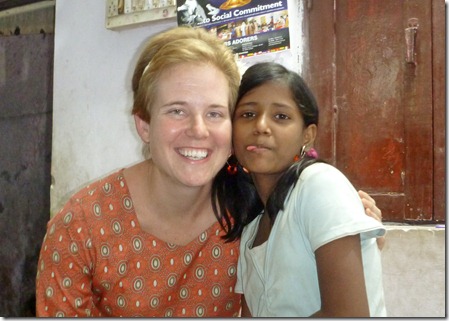
STATISTIC #3: India has the world’s third-largest HIV-positive population and one third of the world’s tuberculosis cases
This month, everything I have heard about HIV has gotten personal. She’s a lovely woman named Jaya,* born in Nepal, then trafficked and sold into prostitution when she was 15. Since working in this industry, she became infected with both HIV and Tuberculosis. Her 35-year-old body now resembles that of an elderly woman
I have spent a lot of time with Jaya. We sit on the bench and comb each other’s hair every morning. I try to ignore the amount of hair that falls out every time I brush it. I also spend time rubbing her back. She always squeezes my hand and holds it so tight. Sometimes actions speak so much louder than words.
Yesterday I walked Jaya to the clinic to get a Tuberculosis treatment shots. The walk was only about a half a mile, but it took us almost an hour. We walked slow, painfully slow, pausing every 100 meters so she could catch her breath. I sang worship songs as we walked: “There is power in the name of Jesus, to break every chain, to break every chain…” I tell her that she is going to beat this. That she is going to get better. We pray together and as tears fill my eyes, I try to be strong.
You see, it’s easy to turn away when it’s just a statistic. But when it’s a little boy tugging on your hand and your heart, when it’s a woman who has lost her livelihood due to the injustices, when it’s a young girl who has her whole future in the hands of someone who sees the world in dollar signs – statistics are no longer something you see but rather something you become. Because behind every single number is a real person with his or her own story of their triumphs and struggles, hopes and dreams.
So what do we do when we see these things? Edmund Burke said this: “All that is necessary for the triumph of evil is that good men [and women] do nothing.” All I’m asking you to do is something simple – to get out there and meet these people.
Seeing these women has changed me. But for you, this blog is still just words on a screen, names on a page, statistics and not stories. So today, my plea to you is this: Get out there. See the world. Meet people. Hear their stories. You don’t have to India or Africa to do this. There are people in need and injustices happening on every street corner in the world, I can guarantee it (Yes, even in America. Read the book Not For Sale if you don’t believe me.) It’s what Jesus did. In fact, Jesus spent so much time with the poor that people thought he himself was a sinner. He gave us a model of how we should live as Christians, and He’s just waiting for us to follow. It might be scary to take the first step, but know that God is with you and your experiences will change you in a way that nothing else can, believe me. Because we will protect what we fall in love with.
So – You. Yes, you. Find a statistic. Then get out there and put skin on it. That experience will open your eyes, change you, and thus change the world.
———————————-
*Names have been changed to protect the privacy of at-risk individuals
(1) Johnstone, P. Operation World: A Guide for Prayer in Every Nation of the World. 2010
(2) Dogra, N. “Prostitution in India: The Staggering Numbers and the Stagnant Legality.” http://www.youthkiawaaz.com/2012/04/prostitution-in-india-the-staggering-numbers-and-the-stagnant-legality/
(3) Kristof, N. Half the Sky: Turning Oppression into Opportunity for Women Worldwide. 2010. Also at http://www.halftheskymovement.org/issues/forced-prostitution

